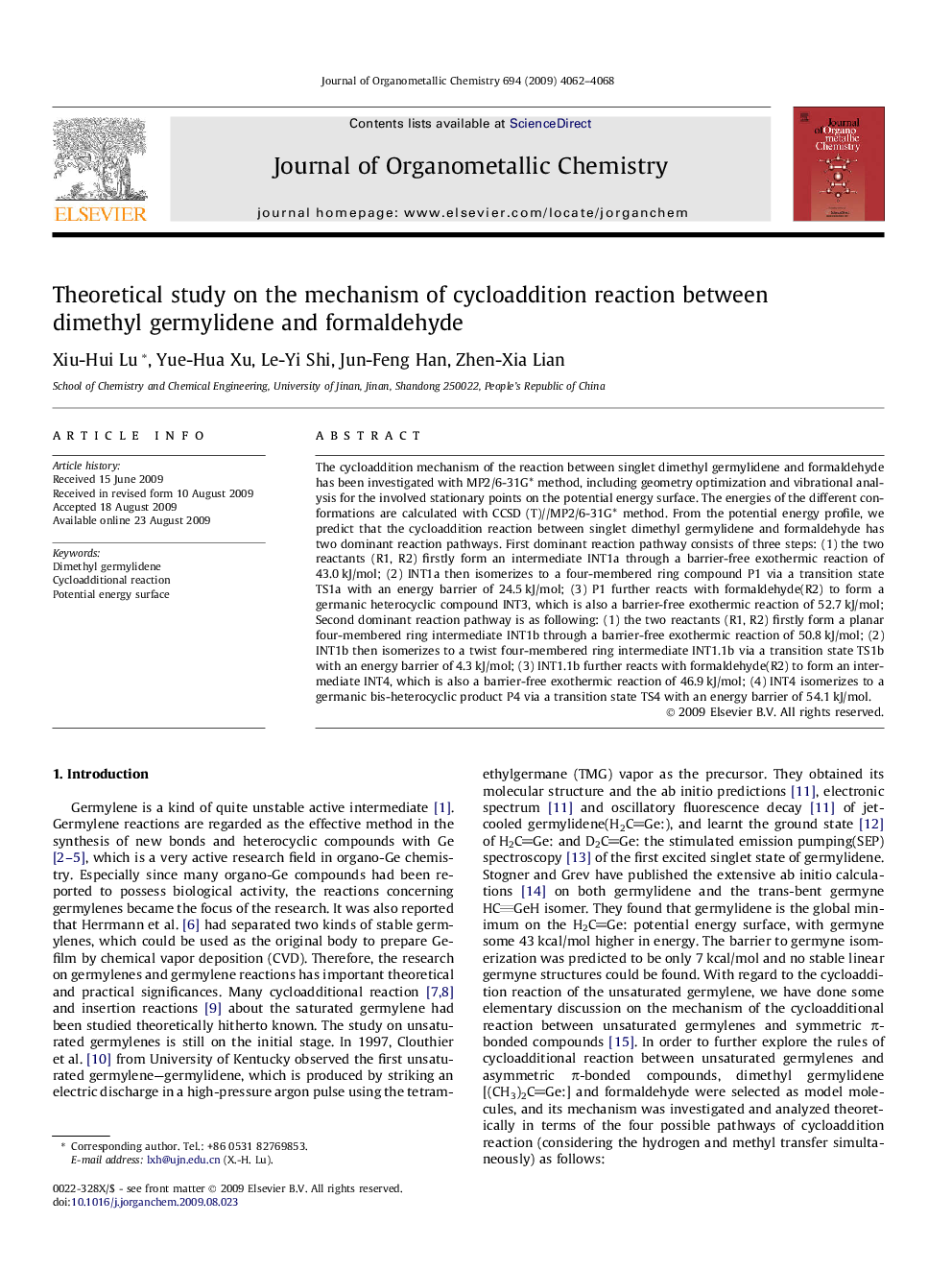| کد مقاله | کد نشریه | سال انتشار | مقاله انگلیسی | نسخه تمام متن |
|---|---|---|---|---|
| 1324370 | 977337 | 2009 | 7 صفحه PDF | دانلود رایگان |

The cycloaddition mechanism of the reaction between singlet dimethyl germylidene and formaldehyde has been investigated with MP2/6-31G∗ method, including geometry optimization and vibrational analysis for the involved stationary points on the potential energy surface. The energies of the different conformations are calculated with CCSD (T)//MP2/6-31G∗ method. From the potential energy profile, we predict that the cycloaddition reaction between singlet dimethyl germylidene and formaldehyde has two dominant reaction pathways. First dominant reaction pathway consists of three steps: (1) the two reactants (R1, R2) firstly form an intermediate INT1a through a barrier-free exothermic reaction of 43.0 kJ/mol; (2) INT1a then isomerizes to a four-membered ring compound P1 via a transition state TS1a with an energy barrier of 24.5 kJ/mol; (3) P1 further reacts with formaldehyde(R2) to form a germanic heterocyclic compound INT3, which is also a barrier-free exothermic reaction of 52.7 kJ/mol; Second dominant reaction pathway is as following: (1) the two reactants (R1, R2) firstly form a planar four-membered ring intermediate INT1b through a barrier-free exothermic reaction of 50.8 kJ/mol; (2) INT1b then isomerizes to a twist four-membered ring intermediate INT1.1b via a transition state TS1b with an energy barrier of 4.3 kJ/mol; (3) INT1.1b further reacts with formaldehyde(R2) to form an intermediate INT4, which is also a barrier-free exothermic reaction of 46.9 kJ/mol; (4) INT4 isomerizes to a germanic bis-heterocyclic product P4 via a transition state TS4 with an energy barrier of 54.1 kJ/mol.
The potential energy surface for the cycloaddition reactions between dimethyl germylidene and formaldehyde with CCSD (T)//MP2/6-31G∗ method. On the basis of the potential energy surface, we can predicted reactions (3) and (4) is dominant reaction pathways of the cycloadditional reaction between singlet dimethyl germylidene and formaldehyde.Figure optionsDownload as PowerPoint slideFigure optionsDownload as PowerPoint slideFigure optionsDownload as PowerPoint slideFigure optionsDownload as PowerPoint slide
Journal: Journal of Organometallic Chemistry - Volume 694, Issue 25, 1 December 2009, Pages 4062–4068